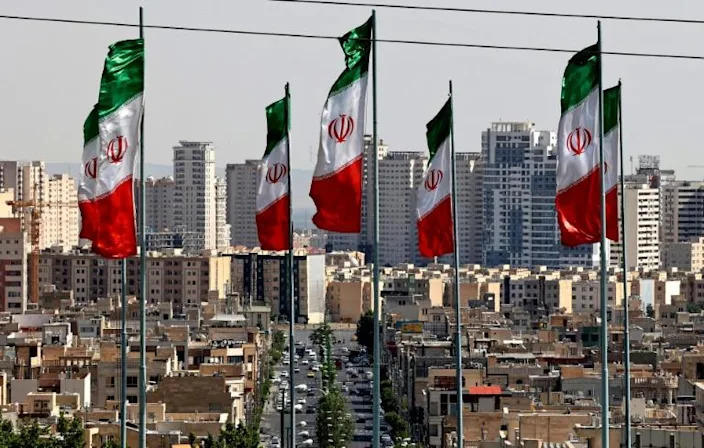Source: news.yahoo.com
Stuart WILLIAMS

Holakou Rahmanian, born into a Bahai family in Tehran in 1989, grew up like any Iranian child, shone at school and passed his exams with flying colours. But then he applied to go to university.
“I received a message saying ‘your file is incomplete’,” he told AFP.
After making enquiries, “I realised it had nothing to do with having an incomplete file, but everything to do with being a Bahai,” he said in a telephone interview.
“I was very frustrated.”
The true reason for his being barred was passed on verbally but not in any official document.
The Bahai community in Iran, the country’s largest non-Muslim religious minority, is subjected to discrimination in every aspect of life, from education to burial, representatives say.
The Bahai faith, unlike Christianity, Judaism and Zoroastrianism is not a recognised belief in the Islamic republic and the community’s members have suffered persecution since the 1979 revolution.
While repression is no longer on the scale seen in the revolution’s bloody immediate aftermath, Bahais are still imprisoned, barred from higher education, banned from public service and face problems building businesses.
With hardline judiciary chief Ebrahim Raisi on course to win this month’s presidential election, representatives fear there is little chance of any improvement soon.
– ‘Cradle to grave’ –
The Bahai faith is a relatively modern monotheistic religion with its spiritual roots dating back to the early 19th century in Iran, promoting the unity of all people and equality.
It has millions of adherents across the world but its origins and biggest community in the Middle East are in Iran.
Adherents say the tenets of the faith encourage a non-confrontational approach known as “constructive resilience” that helps the community that numbered 300,000 before the revolution to stay alive.
Its crown jewel is the grassroots Bahai Institute for Higher Education (BIHE) that has allowed young people — including Holakou Rahmanian — to gain access to university-level teaching.
Helped greatly by the internet, it offers a combination of online learning, often from abroad by Bahai emigres, home teaching, and classes in property rented by the community.
“Bahais in Iran are persecuted from cradle to grave. This is the picture,” said Diane Alai, representative of the Bahai International Community (BIC) to the United Nations in Geneva.
“There is not a single Bahai in Iran who has not been affected — the types of persecution are so widespread,” Alai told AFP by phone.
But she added: “Despite the persecution, they want to continue to live in Iran and contribute to the prosperity of the country.”
There was an outcry last month after rights groups said that Bahais were no longer allowed to bury their dead in land in Tehran as they had done traditionally.
Instead, they were being co-opted into using a mass grave originally intended for victims of a 1988 massacre of regime opponents.
This was part of a pattern of “systematic” violations against the Bahais also including “arbitrary arrest and detention, forcible closure of businesses, confiscation of property, bans on employment in the public sector, denial of access to higher education, and hate speech campaigns on state media,” Amnesty International said.
Following the outcry, this situation was rectified, according to the BIC.
– ‘Turn up the heat’ –
Bahais, regarded as apostate by many Islamic religious conservatives, were subjected to persecution even under the shah, though not on the institutionalised scale seen after the revolution.
Many prominent Bahais left after 1979, such as the architect Hossein Amanat, who designed the futuristic structure in Tehran that was known as the Shahyad (In Memory of the Shah) Tower and now, still a landmark, the Azadi (Freedom) Tower.
Over 200 Bahais were executed in the early years of the Islamic Republic, according to activists.
Ten Bahai women including 17-year old Mona Mahmudnizhad were hanged in June 1983 in the southern city of Shiraz in a case that caused global horror.
The Bahais sought to find ways to live in the country despite the obstacles, and some of them even fought in the war with Iraq.
Yet their status remained a taboo, with activists accusing the Iranian authorities of hoping the persecution would cause the community to disintegrate.
That silence was only occasionally broken, such as in 2016 when the daughter of late former president Akbar Hashemi Rafsanjani, Faezeh Hashemi, outraged conservatives by meeting a prominent jailed Iranian Bahai, Fariba Kamalabadi, who was on leave from prison.
A lack of modern census data makes estimating the number of Bahais currently in Iran difficult, but representatives believe the population remains comparable to the pre-revolution figure.
The goal of Iran’s leaders is to “remove the Bahai faith as a viable entity in Iran”, said James Samimi Farr, of the US Bahai Office of Public Affairs.
“My fear is Iran will continue to turn up the heat to test the patience of the international community,” he said.
– BIHE ‘red line’ –
Rahmanian told AFP he grew up being told that “we always had to keep a low profile. I was advised not to talk about my faith openly”.
Yet, he has “zero bad memories” from contact with fellow pupils.
At the BIHE, he studied computer science, specialising in artificial intelligence.
Rahmanian left Iran in 2012 and managed, with difficulty, to have his BIHE credentials recognised in the United States.
He graduated from the University of California in Santa Cruz in 2018 and got a job with Microsoft.
He now works on AI with Amazon and also teaches at the BIHE, in recognition of how it helped him, and that he calls, proudly, “a red line that the community will never let go of”.
sjw/jh/kjm
July 15, 2021 3:49 pm
Ein Internationale Gremium sollte die Verantwortlichen in Iran zu Rechenschaft ziehen.